Trending — The Hybrid Future —
Are senior leaders on a different path?
Are senior leaders on a different path?

Author: Sepideh Yekani
July 2024
Hybrid working models offer a diverse array of options that blend in-office and remote working scenarios. One employee might visit the office just once a month, while another might be present four days a week. Both instances are typical of a hybrid model. The inherent variability of these arrangements presents complex challenges in making informed decisions.
It highlights the risks of relying on assumptions in this unpredictable environment, where everyone is navigating the nuances of hybrid working for the first time. Do leaders depend on data-driven strategies, or are their decisions more influenced by personal experiences and perspectives? Are there discernible patterns in how different roles engage with the office and experience hybrid working? What are the risks if there is a disconnect between the experiences of leaders and others? Understanding these dynamics is crucial for effectively investing in and managing the side effects that influence the future of hybrid working.
In this article, we explore some of these questions through the perspectives offered by our project, The Hybrid Future (THF), aiming to gain deeper insights and understandings of hybrid working practices.
Insights from The Hybrid Future
To comprehensively understand the dynamics of hybrid working, it is crucial to assess the degree of flexibility employees have over their work location, the frequency of their office visits, the purposes behind these visits, and the implications of these choices. Insights from the THF project illuminate several key aspects. The findings reveal that 28% of respondents enjoy complete autonomy over their work location, while 60% are expected to work from the office either partially or most of the time. Furthermore, nearly 78% of respondents report visiting their offices at least once a week, with almost half attending for a minimum of three days per week.

The main motivations for coming to the office include meetings and collaboration (59%), compliance with mandates to be physically present (53%), and opportunities for bonding or socialising with colleagues (50%). However, a deeper analysis of the data reveals distinct patterns based on roles within the organisation. For individual contributors, office mandates are the predominant reason for their presence. In contrast, for managers, this ranks third, and for senior leaders, it is only the fifth most cited reason. These findings suggest that the motivation for office attendance varies across different organisational levels, indicating the complexity of designing inclusive approaches to hybrid working policies.
One significant distinction across roles, particularly benefiting senior leaders, is the heightened sense of connection to the organisation. Our study reveals a notable pattern: 75% of senior leaders report feeling ‘very connected’ to their organisation, compared to 65% of people managers and only 53% of individual contributors. Interestingly, the top three factors that enhance this sense of belonging remain consistent across all roles: recognition and appreciation, transparent communication and feedback, and increased opportunities to connect and socialise with colleagues.
Nevertheless, a larger proportion of senior leaders ‘frequently’ or ‘sometimes’ encounter feelings of social disconnection and exclusion from important discussions when working remotely – a challenge less pronounced among managers and individual contributors. This underscores the necessity of addressing the unique needs at various organisational levels to cultivate a more inclusive hybrid working environment.
Figure 01 – Social disconnection in remote work across different roles

Figure 02 – Feeling left out of important discussion due to remote working across different roles

In terms of wellbeing, the debate around digital fatigue resulting from online meetings in hybrid work environments continues to garner attention. Our findings indicate that individual contributors report similar levels of fatigue from both in-person and online meetings, regardless of whether these involve mixed presence. Conversely, senior leaders and people managers are significantly more likely to feel ‘sometimes’ or ‘frequently’ fatigued when participating as online attendees, whether the meetings are fully virtual or conducted in a mixed presence format.
Figure 03 – Variations in meeting fatigue across different roles

Creativity and innovation are vital for the sustainability and growth of organisations, particularly in the hybrid working era. Generating new ideas and solving novel problems while being physically distant from the team can pose significant challenges. Our research shows that 58% of respondents consider in-person brainstorming sessions with colleagues as ‘very’ or ‘extremely’ effective, compared to only 39% for online sessions. This initially seems like a significant gap and challenge across all roles in organisations, yet further analysis reveals considerable differences. Among senior leaders, this figure is 65% for in person sessions, contrasted with just 18% who find online brainstorming ‘very’ or ‘extremely’ effective. Meanwhile, the gap is much smaller among individual contributors, amounting to only 10 percentage points.
Could it be that senior leaders are overstating the challenges of online brainstorming because they have higher expectations? Or are online brainstorming sessions genuinely less effective? This inconsistency in experience is underscored by another finding: only 38% of senior leaders reported that the transition to hybrid working had a ‘positive’ or ‘very positive’ impact on their creativity at work, compared to 57% of people managers and 61% of individual contributors.
Figure 04 – Impacts of transition to hybrid working on creativity at work across different roles

Furthermore, the study findings present a paradoxical view of where different roles within an organisation find their creative spark. Among individual contributors, a significant 48% report that their best ideas come when they are at home, whereas only 20% find the office to be the most conducive environment for creativity. In contrast, senior leaders tend to prefer the office, with 35% citing it as the space for best ideation, compared to 22% who choose their home. Managers display a more balanced approach, with approximately 30% finding equal inspiration in both settings.
This variation raises important questions: What drives these differing preferences across organisational levels? Does the office environment particularly foster strategic thinking and collaboration for senior leaders, while individual contributors find the solitude of home more conducive to creativity? Understanding these dynamics could have significant implications for organisational policies on work environments.

When required to be creative in the office, the ‘quiet zone’ emerges as the preferred location across all roles, with individual contributors showing a slightly stronger inclination. Senior leaders show a significant preference for the ‘creative room,’ with their preferences nearly evenly split at 35% for the creative room and 34% for the quiet zone. However, for individual contributors and managers, the preference for the quiet zone is markedly stronger, with a gap of approximately 16 percentage points.
Despite the notable differences previously mentioned, certain aspects such as decision-making, problem-solving, and communication effectiveness within the team display a remarkably consistent performance across roles. The overall gap in any of these areas does not exceed 10 percentage points, indicating a commendable level of uniformity in these critical skills across different organisational levels.
In conclusion, our findings reveal significant disparities in needs, patterns, and experiences across different roles, while also highlighting areas of consistency. This underscores the critical need for strategic decisions to be grounded in thorough investigation rather than assumptions. It is particularly important for senior leaders, who typically formulate work strategies and policies, to avoid basing their decisions solely on their own experiences. The data clearly indicates that assumptions have no place in effective strategic planning. This situation calls for a more comprehensive approach to decision-making, ensuring that strategies truly reflect the diverse realities within the organisation and foster a more inclusive and effective work environment.


